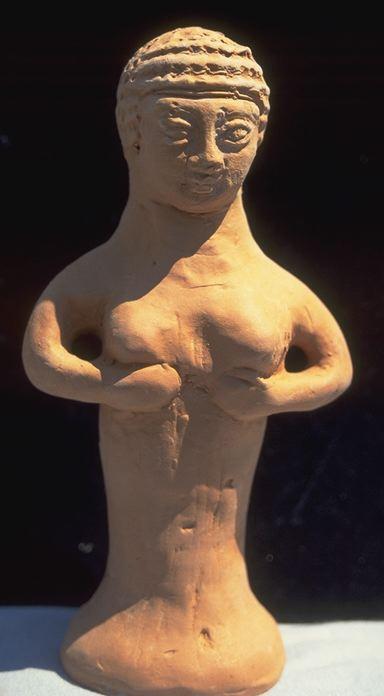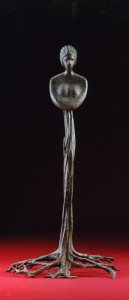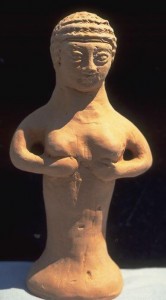
According to both the Bible and archaeology, the ancient Jews and early Christians worshipped a Mother Goddess alongside Father God. Later, She was consciously eradicated from worship by the religious authorities.
The Canaanite goddess Asherah appears to be the earliest female deity that the ancient Isralites adapted to worship. This early period, in which Asherah was first worshipped, is following the arrival of the Isralite tribes in Canaan. The Hebrews worshipped her for about six centuries, until about 586 B.C. when Nebuchadnezzar destroyed Jerusalem. The Israelites took over the cult of the Canaanite mother goddess Asherah from the days of their first settlements. Wooden carvings of the goddess implanted into the ground and set next to a altar of Baal, and located on hilltops or under leafy trees were used in public worship of Asherah. While popular private religious use consisted of clay figurines of Asherah, where she is depicted with emphasis on her fertility by making the gesture of holding her breasts. Asherah was an important deity in the Ancient Near East, known for her might and nurturing qualities. She was also known by several other names, including Astarte and Istar. But in English translations Asherah was translated as “sacred tree.”

The Bible reveals that the worship of Asherah was introduced into the Jerusalem Temple by King Rehoboam, the son of Solomon, in or about 928 BCE. Of the 370 years during which the Solomonic Temple stood in Jerusalem the statue of Asherah was present in the Temple, and her worship was a part of the legitimate religion approved and led by the king, the court, and the priesthood.
Considered the moon-goddess, Asherah was often presented as a consort of Baal, the sun-god. She was also worshiped as the goddess of love and war and was sometimes linked with Anath, another Canaanite goddess. Worship of Asherah was noted for its sensuality and involved ritual prostitution. The priests and priestesses of Asherah also practiced divination and fortune-telling.
Asherah was often portrayed with a lion or ibex on either side. A Tree of Life with 3 pairs of branches, an ibex and a lion on either side. She was associated with all that was symbolized by the Tree of Life. In making the first Menorah, the ancient Hebrews were instructed to have three branches coming out of either side of a central stand with an almond shaped cup and a flower at the end of each one.
External links:
Asherah (Wikipedia)
Asherah pole (Wikipedia)
References:
R. Patai, “The Hebrew Goddess” (1967)
J.M. Hadley – “The Cult of Asherah in ancient Israel and Judah – Evidence for a Hebrew Goddess”,
Cambridge University Press, (2000)




